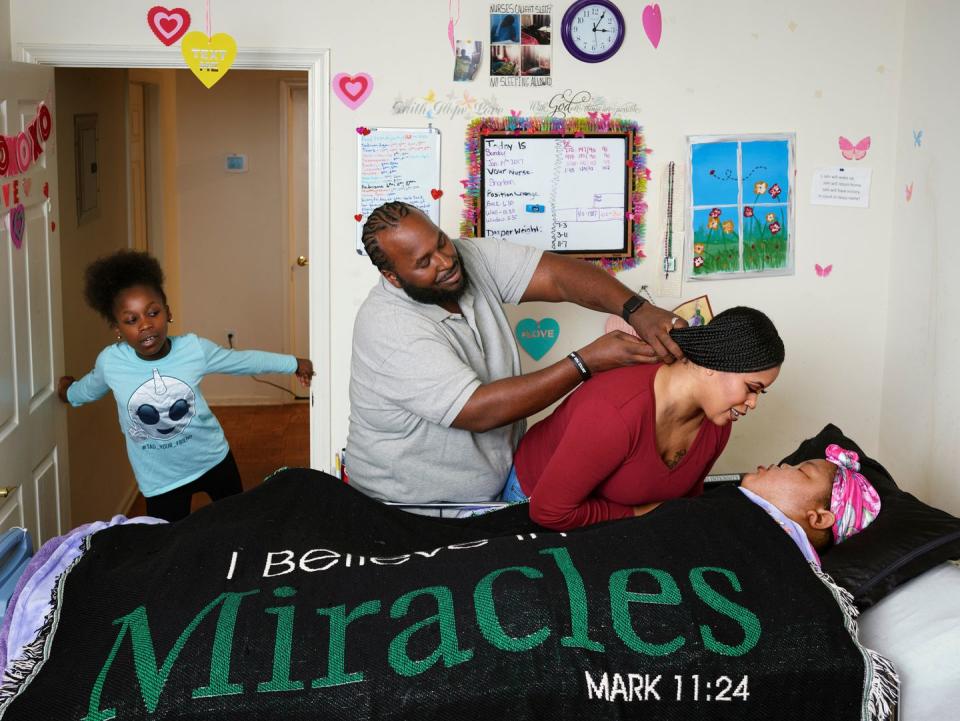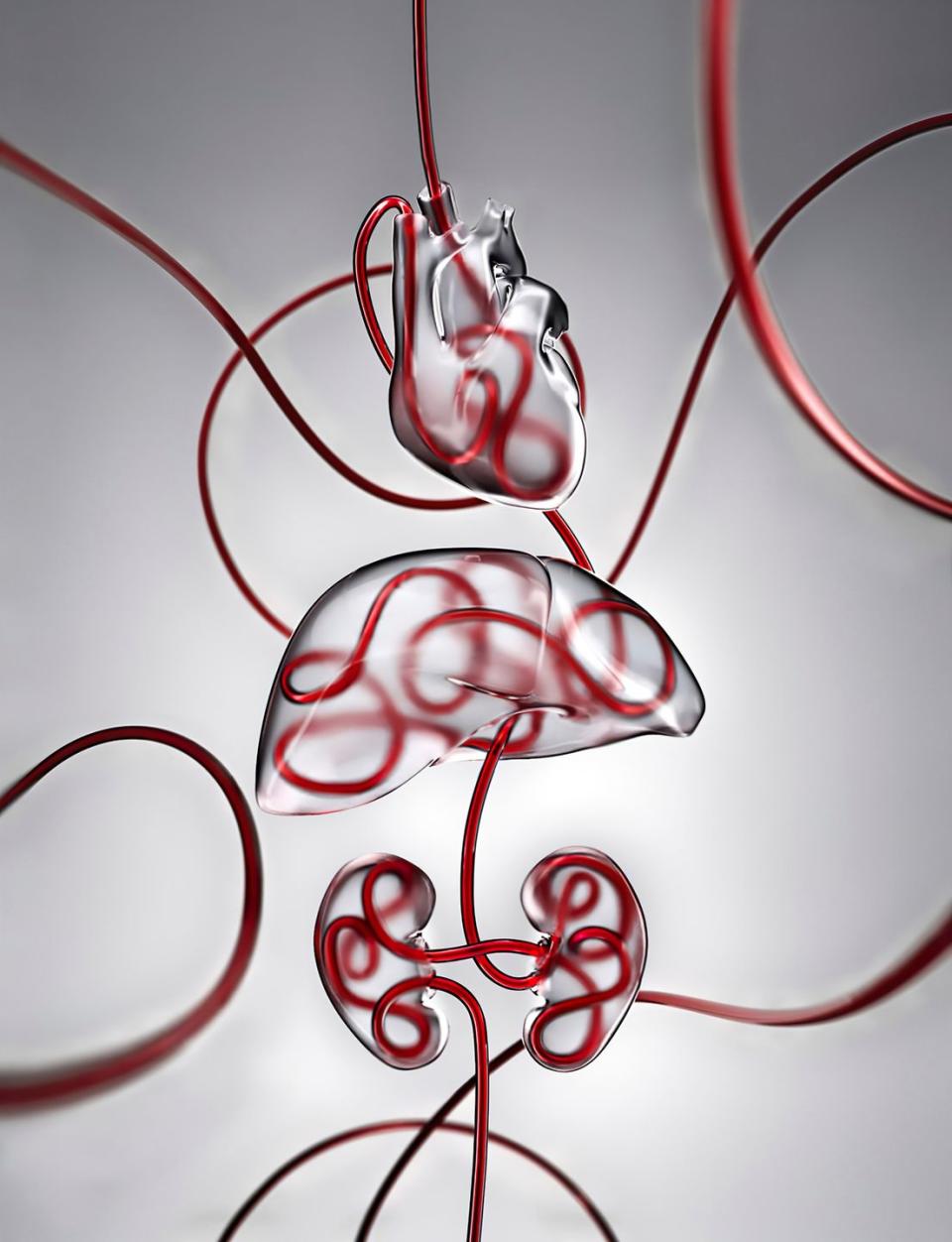Is Death Real? New Experiments Raise Important Questions On What It Means To Die

On December 9, 2013, 13-year-old Jahi McMath was checked in to Oakland Children’s Hospital in California for a routine tonsillectomy. She had sleep apnea and her parents believed that having her tonsils removed would improve her life, her sleep, and her relationships with her classmates. Each year, more than half a million people in the United States get this procedure. The vast majority have no complications. McMath was not so fortunate. About an hour after waking from the surgery, she started spitting up blood. In the middle of the night, her oxygen-saturation levels plummeted. Medical staff started working frantically to intubate her, but McMath’s heart stopped. As Rachel Aviv reported in a chilling 2018 New Yorker story, it would take several more hours to restore her heartbeat and breathing.
Two days later, doctors declared McMath brain-dead. But with her body still warm and her skin still soft, her family disagreed. They fought in court to keep her on a ventilator. Eventually they raised enough money through a GoFundMe campaign to airlift McMath to New Jersey, one of the only states that allows families to refuse a death declaration on the basis of their religious beliefs. Nourished through a feeding tube and supplied with supplemental hormones, McMath’s body continued to grow and develop—and even began menstruating.
In 2018, Jahi’s family’s attorney announced that she had died of complications from liver failure. Only then, five years after the tonsil surgery, “were all parties in mutual agreement that Jahi had in fact died,” says Michele Goodwin, chancellor’s professor and director of the Center for Biotechnology and Global Health Policy at UC Irvine School of Law. “It was quite the controversial case.”
And it’s not the only such case. Over the last 70 or so years, declaring death has gotten progressively messier. Scientific advances such as ventilators and life support have made it harder and harder to find the line between being a person and being a body. Now, mind-blowing experiments in pigs, and the development of a souped-up life-support system called OrganEx, are reinvigorating a decades-old debate about how our lives end. While OrganEx is not yet available for use in humans, it was able to reverse some of the cellular changes associated with death in pigs. What does that mean? In studies, when pigs were hooked up to the system after being dead for an hour, they looked lifelike, their hearts restarted, and they even moved. But were the pigs still dead? And if a treatment like that ever makes it to humans, what happens to the next Jahi McMath?
THE DEAD CONTINUE TO LIVE
The technology that kept Jahi McMath looking alive for five years is one of the first threats to death as we know it, the modern ventilator. Ventilators, which started appearing in hospitals in the 1950s, save lives by pushing air into a patient’s lungs when the person no longer can breathe on their own. Their invention also created an ethical dilemma: If bodies could breathe indefinitely without recovering or decaying, when were doctors legally allowed to pronounce them “deceased?”
In 1968, a committee of experts met at Harvard Medical School to discuss the matter. The existing criteria for determining death were based on the ways people had died for centuries. When breathing stopped and a person had no pulse, they were no longer alive. Now, the group proposed adding a second criterion, the absence of brain activity. It made sense: The brain holds power over other organs, and controls breathing. There wasn’t, and still isn’t, a way to fix a nonfunctional brain.
The timing of this decision wasn’t coincidental. Just one year prior, in 1967, doctors had performed the first heart transplant. In addition to relieving the burden of prolonged, meaningless treatment, the new brain-based approach to defining death could also ward off controversy over when doctors could retrieve transplant organs. If an organ donor’s brain was dead, their organs were fair game.
A legal entity called the Uniform Law Commission, which is charged with clarifying and stabilizing complicated laws across the country, formalized the brain-death criterion in 1980. Most U.S. states have since adopted it. According to this law, a person is dead if they meet one of two conditions: “irreversible cessation of circulatory and respiratory functions” or “irreversible cessation of all functions of the entire brain, including the brain stem.” Over time, brain death became the more popular definition of biological death, and doctors codified this view in a 2019 position statement by the American Academy of Neurology. Ninety-three percent of the organization’s surveyed members agreed that brain death is the equivalent of circulatory death.

Yet there have been rare cases, most conspicuously Jahi McMath’s, where medical interventions have successfully maintained a person for years after their brain no longer worked. “[Jahi] indeed went through puberty,” says Alex Capron, an expert in health policy and medical ethics at the University of Southern California Gould School of Law and Keck School of Medicine. If that’s true, and some endocrine functions can persist without brain activity, there’s room for critics to argue that the current standards are incomplete. And that was before scientists started trying to reverse the dying process in pigs.
AN ACCIDENTAL BREAKTHROUGH
Yale neurobiologist Nenad Sestan researches genes that control how neurons grow and form connections in the developing brain. To perform these studies, he orders slices of tissue from brain banks around the world. Eight or nine years ago, a specimen from London missed the plane. The extra day it took to arrive was presumed to be catastrophic: Cells die after several minutes without oxygen. It’s one of the first things Sestan recalls learning in medical school.
But Sestan had already noticed that this wasn’t always the case. On several occasions, someone left a brain slab out a few extra hours before moving it into fluid for experiments, yet Sestan had still managed to recover living cells. So when the overdue brain arrived from London, Sestan asked one of his postdoctoral fellows to dissect a piece of it and let it grow in a petri dish containing cellular nutrients. “Maybe something will be there alive,” he said.
It worked; some cells grew. And then it worked again on a second brain the researchers sliced and recovered to make sure the results weren’t a fluke. Sestan started to wonder: If living cells could be preserved from a dead brain, why not try to revive the whole organ?
Using assorted pumps, heaters, and filters to circulate a custom-made blood substitute, Sestan and his coworkers cobbled together a now-patented perfusion system, which they called BrainEx. They achieved stunning results. In a 2019 paper, the team described how BrainEx revitalized key features of pig brains retrieved from a slaughterhouse. Four hours after the pigs had died, neurons were firing, blood vessels were functioning, and the brain’s immune cells were chugging along.
After the BrainEx paper came out, scientists and physicians inundated Sestan with ideas about what to do next. “Nenad was like, ‘Well, we should try definitely to answer as many questions [as we can] at once by trying to do this on the entire body,’” says David Andrijevic, MD, a research scientist who joined the lab at Yale shortly before Sestan published the BrainEx study.
Expanding from BrainEx to a whole-body version, which the lab called OrganEx, presented several challenges as the team began the scale-up. In an isolated brain, you don’t have to deal with blood clotting and immune reactions, for example. Revamping the system took about three years.
At its core, OrganEx functions like extracorporeal membrane oxygenation, or ECMO, which is also called life support. It has a pump that mimics heart function and an oxygenator to mimic lung function. But OrganEx also includes a blood-filtration unit, plus additional pumps, tubes, and sensors, to make real-time measurements of metabolites, gases, electrolytes, and pressures. Then, there are the mixtures that the system pushes into the body: a priming solution to correct electrolyte and pH imbalances, a cow-derived hemoglobin that carries oxygen, and about a dozen drugs—anti-inflammatories, anti-oxidants, antihistamines, antibiotics, and several neuroprotective agents.
Basically, OrganEx adds a sort of cellular life support to traditional ECMO. It also revives the body more slowly. When cells have been deprived of oxygen for a while, suddenly connecting them to fresh blood can begin a cycle of stress and damage that kills them, a problem called ischemia-reperfusion injury. What you want instead is a kind of slow reanimation, a gentler process of reviving cells that have already begun to die. If that were possible, doctors might be able to extend the amount of time an animal could be dead before recovering. It might make more organs from more bodies recoverable for transplantation.
It’s “ECMO on steroids,” Sestan says. He’s only half joking. OrganEx does contain a steroid, dexamethasone, although it’s not one that bodybuilders would find useful.
THE PIGS WERE DEAD
When it came time to test OrganEx on pigs, Sestan and his team at Yale anticipated a long day. It took about five hours to prepare solutions and ready the machines and another seven hours to conduct monitoring and measurements on 10 pigs. They worked on one animal at a time, each sedated and kept fully anesthetized. The scientists put a tiny electrode through a square-inch hole in each animal’s chest and touched its heart to induce cardiac arrest. Two monitors, one for the heart and one for brain activity, showed flat lines. The pigs were dead.
One hour passed. Then the real test began, as the scientists connected each motionless animal to the OrganEx system or, as a control, to a standard ECMO. The experiment was set to run for the next six hours, but the first and most obvious changes happened about a half hour in: Heart monitors connected to four out of five OrganEx-treated pigs began to light up. Peaked lines started moving in pulses across the screen. “It was like, whoa, whoa, what should we do now?” says Andrijevic. The hearts’ electrical activity had resumed spontaneously, without chest compressions or other obvious lifesaving measures.
The researchers peered into the pigs’ chest holes. “We saw it with our own eyes,” Andrijevic says. In every OrganEx pig that showed electrical activity on the monitor, the heart itself was visibly contracting. (None of the five animals in the ECMO-treated group showed any electrical activity or contractions.)
After six hours of perfusion, the researchers administered a euthanasia drug and disconnected the machine. They examined tissue from the pigs’ vital organs—including the heart, lungs, liver, kidneys, and brain—under a microscope. The cells’ shape and organization looked noticeably better in OrganEx samples compared with the samples from pigs given ECMO. Other tests showed restored activity of specific cellular repair genes after OrganEx treatment.
OrganEx was so effective that some changes were obvious to the naked eye. Treated pigs lacked typical signs of death such as muscle rigidity (rigor mortis) and purple discoloration (livor mortis). “The animal looks different,” Sestan says. “Trust me. You just see it.”

When asked what else happened during the experiment, Andrijevic paused, then struggled for words: “What has raised a lot of eyebrows is…I’m not sure if you have noticed it, because we have tried, like, not to… We have mentioned it, of course… the ‘movements.’”
Andrijevic and his coworkers had performed a routine procedure during the perfusion. In preparation for imaging the brain, he says, they snaked a catheter into the pig’s neck and squirted contrast dye into the carotid artery. It’s a procedure that makes it easier to see blood vessels on an x-ray.
However, when the dye shot through the tube, something startling happened: The 70-pound slab of flesh appeared to turn its head. “It was just a few seconds. It was not like the animal was trying to walk out,” Andrijevic says. Yet it was not just a twitch either. Andrijevic calls it a “complex” movement and says it suggests that OrganEx perfusion can restore neuromuscular junctions, where nerves and muscle fibers meet.
“What does it mean?” he asks. “We’re not sure.”
LIFE, EXTENDED
Scientists are still puzzling over what the OrganEx results mean. The experiments were performed in animals and have years to go before they could affect human medicine. Still, at a cellular level, they may show that death may not proceed as quickly or as finally as once thought. For the person who collapses from a heart attack and remains on the ground for 10 minutes, the findings raise a key question: How dead are they, really?
Nowadays, if someone’s heart stops beating from disease or from a heart attack, they only have a 10 to 20 percent chance of making it out of the hospital alive, says transplant surgeon Robert A. Montgomery, MD, PhD, who directs the NYU Langone Transplant Institute. He has personally beat those odds. Before receiving a heart transplant at his own hospital in 2018, he needed resuscitation on seven occasions after suffering cardiac arrest from an inherited condition that weakens the heart muscle.
Montgomery now wonders if death could be “reversible” in situations like his own. One could imagine using OrganEx instead of ECMO to intervene after a cardiac arrest “before restarting the heart and hitting the brain with warm blood,” he says. Without the reperfusion injury that ECMO can cause, survival rates could improve.
Problem is, the idea of reversibility hits right at the heart of the debate about the medical definition of death. According to a recent article in the Daily Beast, one question that cropped up when the Uniform Law Commission (ULC) met over Zoom to debate death again in March was whether to call it “irreversible” or “permanent.” Seema Shah, JD, a bioethicist at Lurie Children’s Hospital in Chicago, who attended the ULC’s virtual forum, says it can be hard to know what “permanent” means if you can restore function in cells. “That starts to call into question the different practices that we do,” she says.
Lest this all sound like a thought experiment, consider that hospitals must constantly make difficult decisions that depend on whether a patient is really, truly dead. These are life-and-death choices made about your children, your parents, you. How much time, for example, should a doctor spend trying to save a dying patient? Which technologies are they required to try? When are organs available for donation? “If you want to transplant a heart, the longer you wait, the more damage will occur,” Shah says. “But if that heart is removed from one person and put into another, then that raises [another question]: If this heart can work in another body, why couldn’t it have worked in the body from which it was removed?”
Medical teams must make these decisions quickly, under immense pressure, which means health disparities tied to age and race can surface, as documented in reports by the National Academy of Medicine and similar health organizations. Jahi McMath, for example, was Black, and her parents reported evidence of physician negligence in the hours before her death. “If the hospital had been more compassionate, would we have fought so much?” Jahi’s grandmother told Aviv in the New Yorker article. Part of the reason it was so hard for her family to believe she was dead may have been the amount of effort doctors appeared to put in (or not) to save her while she was alive.
Even if it were available for use in humans, OrganEx almost certainly would not have mattered in McMath’s case. Still, it’s possible to picture a future in which it is used to preserve organs against the wishes of a family, used too late, or not used at all. Imagine the impact if the system ever caused the kind of head movements in a loved one that the Yale researchers observed in pigs. Ultimately making the right decisions under these circumstances won’t rely on the scientists who develop the new technology, but on philosophers, academics, and the law. As Shah puts it: “Is the way we determine death based on a legal construct, a social determination, or a biological fact?”
For now, it’s often based on a lack of brain function, but you don’t have to go far in the history of medicine to know that nothing lasts forever. Maybe not even death.
You Might Also Like

